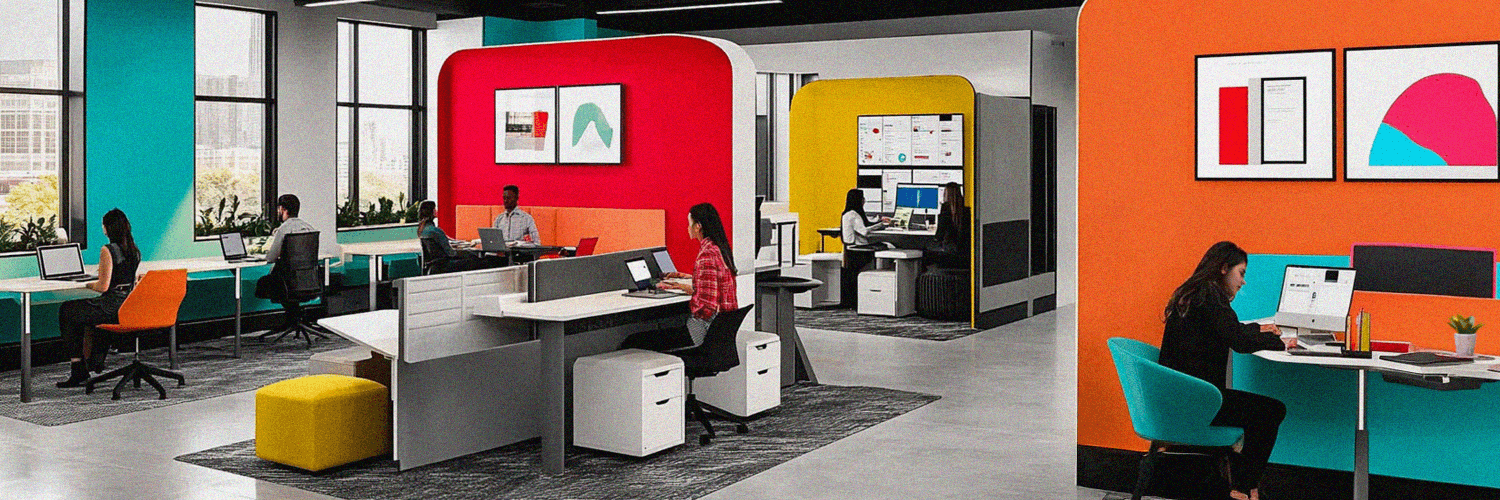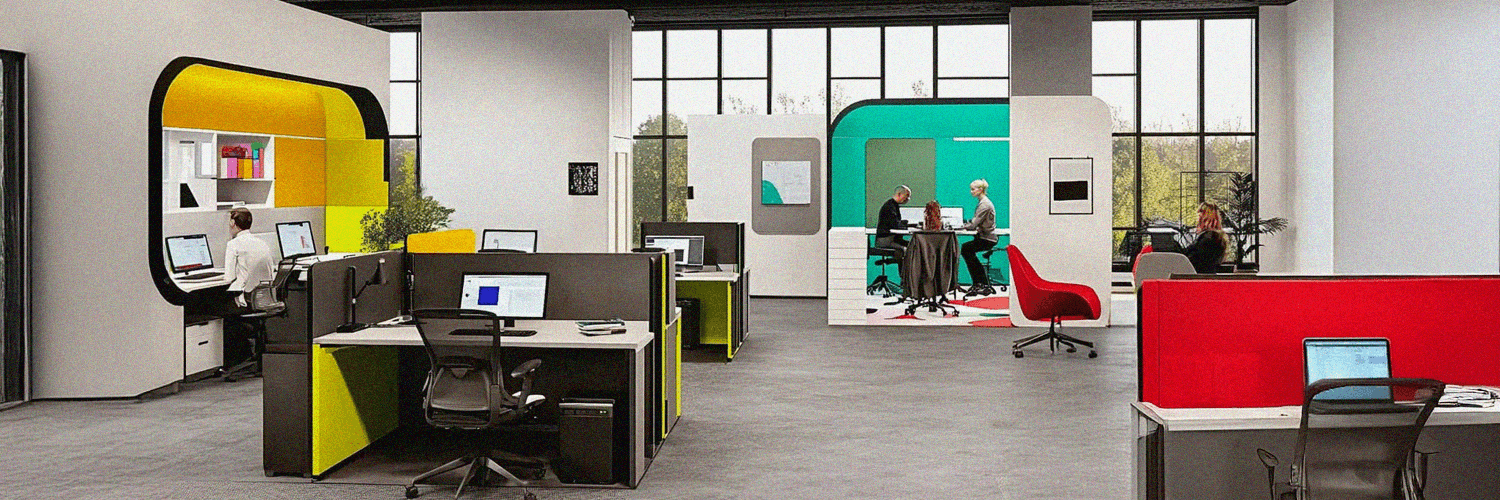Picture this: a world where your office fits snugly in your pocket, where collaboration knows no bounds, and productivity isn't tied to a desk. Say hello to the era where the real action happens in the palm of your hand! With the omnipresent use of smartphones shaping how employees engage with their tasks, organizations are redefining how they approach mobile-first strategies. In this article, we'll explore the concept of a mobile-first workplace and its multiple benefits, dissect key elements for successful implementation, discuss the transition process, analyze future trends, and address challenges along the way.
TL;DR
In a world where mobile technology reigns supreme, embracing a mobile-first workplace strategy is no longer an option but a necessity. Here's what you’ll find in this article:
- Understanding the concept of a mobile-first workplace: 42% of enterprises now prioritize mobile devices in work environments. Post-pandemic, workers are tethered to their phones, not desks, making mobile experiences essential.
- A major benefit of implementing a mobile-first strategy is enhanced accessibility and flexibility that empower employees to work from anywhere, boosting productivity and work-life balance.
- The key elements of a successful mobile-first workplace revolve around seamless integration of mobile technologies, robust security measures, user-friendly interfaces, data analytics capabilities, and personalization options.
- Transitioning to a mobile-first workspace means infrastructure upgrades, training programs, and fostering a culture of flexibility and innovation. The impact is significant, with improved productivity, satisfaction, and competitiveness.
- There are a couple of future trends and impacts of mobile workplace adoptions, such as: AR, VR, AI, ML, and voice-activated interfaces which will transform the workplace, unlocking new opportunities for growth and innovation.
- Shifting towards a mobile-first workplace comes with inherent challenges, which we identified as: addressing privacy concerns, filling skill gaps, ensuring data quality, and overcoming reliance on historical data and traditional workflows.
- Embracing mobile-first strategies is not just about keeping up with the times, but about shaping the future of work, driving innovation, and unlocking the full potential of your organization.
Understanding the Concept of a Mobile-First Workplace
A mobile-first workplace is a strategic approach where the use of mobile devices and technology takes precedence in all aspects of work operations and culture. This work environment prioritizes mobile devices for all work operations, fostering flexibility and productivity by enabling employees to work from anywhere, at any time.
Gone are the days when mobile considerations took a backseat in corporate planning; 42% of enterprises consider themselves mobile-first, emphasizing the shift towards prioritizing mobile devices in work environments. Additionally, while 90% of internet users are accessing the internet via a laptop/desktop/tablet, 92.3% are accessing the internet on their phone.
It’s not a secret anymore that the post-pandemics workers are tied to their phones, not to their desks. 70% of employees keep their phones within eye contact at work, and 91% use at least one mobile app for work. That means it’s time you designed experiences that are incredibly simple to perform on the go.

Benefits of Implementing a Mobile-First Strategy in the Workplace
The adoption of mobile-first strategies has emerged as a game-changer in reshaping workplace dynamics, and its multifaceted benefits are countless. Here are some of the most important:
Enhanced Accessibility and Flexibility
When workers have the technology they need to work from wherever, whenever, they feel empowered to do their best work, which usually leads to increased productivity and improved work-life balance. Sometimes they can work from a traditional home office, or a co-working space where they can meet with other mobile workers, either full-time or a few days a week. This flexibility not only enhances productivity but also allows your mobile workforce to achieve a better work-life balance by integrating work seamlessly into their lives rather than being tied to a rigid schedule or location.
Improved Collaboration and Communication among Teams
Mobile technologies facilitate seamless interaction, irrespective of physical location, fostering teamwork and innovation. When a company has a digital strategy that prioritizes a mobile-first workplace, it allows all employees to be connected in one hub, creating a community. It also provides the opportunity for your mobile workforce to remain engaged while improving their day-to-day experience.
Moreover, mobility enhances collaboration among teams by enabling employees to work together on projects and tasks from anywhere, at any time. With collaboration technology in place, teams can collaborate on documents, share updates, and communicate in real-time, regardless of their physical location. This flexibility not only accelerates decision-making and problem-solving but also increases productivity.
Streamlined Training & Development
Managing a mobile workforce may seem daunting. Relying on mobile platforms to provide on-the-go access to training resources, makes learning accessible and convenient for employees. To enhance this trend, organizations can offer a seamless onboarding experience through virtual or hybrid onboarding methods. For example, utilizing an employee app, new hires can easily navigate through FAQs, training sessions, resources, and technical support, ensuring they feel welcomed and equipped for success from day one. By extending the digital experience to the onboarding process, organizations can increase employee satisfaction and shorten the learning curve for new hires.
When introducing mobile learning to their business, leaders reported a 55% improvement in business growth, highlighting the significant impact of mobile integration in training and development. Embracing a mobile-first approach not only enhances employee learning but also drives business growth and success in the modern workplace.
Better In-Office Experience
Mobile solutions enhance office functionality, simplifying tasks and improving overall workplace satisfaction. Whether it's an employee's first time visiting the office, or they're just used to working hybrid, a mobile app can facilitate the office experience and make it easier. On a typical day, employees come in and out of the office, change desks, floors, and even locations. They brainstorm, host meetings, join customer calls, and catch up with colleagues who work remotely.
For example, workplace experience platforms like Yarooms allow employees to book desks or conference rooms in advance using an intuitive mobile app. Additionally, the app includes an interactive office floor map, so employees can spend less time finding their space and more time being productive. They can select their preferred desk location, choose the duration of their reservation, and even opt for proximity to their colleagues or office amenities.
Competitive Advantage and Innovation
Embracing mobile-first strategies has the potential to enhance agility, positioning businesses at the forefront of their industries. By prioritizing mobile technologies, organizations can swiftly adapt to changing market demands and consumer behaviors. This agility not only ensures timely responses to emerging trends but also fosters a culture of innovation. With the flexibility to work from anywhere, teams are empowered to experiment, sparking creativity, and driving forward-thinking solutions.
Key Elements of a Successful Mobile-First Workplace
And this is only the beginning of your journey. To make it worth, here are some essential components that can shape a thriving mobile-first workplace:
Seamless Integration of Mobile Technologies
By ensuring seamless integration of mobile technologies into existing systems, businesses can avoid disruptions to daily operations while harnessing the full potential of mobile solutions. This integration allows for smooth transitions between desktop and mobile environments, enabling employees to access critical information and perform tasks regardless of their location or device. Moreover, it eliminates silos and redundant workflows, leading to increased efficiency and productivity. At the end of the day, an effective integration will streamline your organization’s processes and enhance its overall performance.
Robust Security Measures
Empowering and protecting today’s workforce requires new approaches to security so employees can access the applications and data they need, from any location, without sacrificing security or performance. Traditional approaches to identity and security, such as relying solely on AD or LDAP, are no longer sufficient in safeguarding against evolving threats. Cloud identity solutions offer a modern alternative, allowing IT departments to centrally manage user access and authentication while enhancing security through multi-factor authentication and device trust mechanisms. Plus, leveraging cloud identity everywhere possible not only enhances security but also simplifies user experiences.
User-Friendly Interfaces
To ensure that their applications and platforms are accessible and efficient for all users, businesses must focus on intuitive and easy-to-use designs. Whether it's a mobile app, website, or enterprise software, incorporating intuitive design principles such as clear navigation, consistent layout, and a user-friendly interface reduces friction, streamlines workflows, and minimizes the learning curve. All in all, a good UX within the workplace is becoming the norm, growing employee motivation and efficiency.
Data Analytics and Reporting Capabilities
Data analytics and reporting capabilities are essential elements of a successful mobile-first workplace, driving optimization and efficiency through data-driven insights. By harnessing workplace analytics, organizations can make informed decisions to enhance productivity, space management, and overall employee experiences.
YAROOMS, for instance, empowers companies with comprehensive analytics tools, offering insights into meeting room utilization, real-time occupancy data, employee satisfaction surveys, and more. Despite challenges such as privacy concerns and data quality issues, the future of workplace analytics holds promise with advancements in AI and ML integration ensuring organizations stay ahead in optimizing their mobile-first workplaces.
Personalization and Customization Options
Tailoring mobile experiences to individual preferences can only enhance user satisfaction, engagement, and productivity. Organizations that pay attention to personalization are frontrunners in the race for their employees’ loyalty. This may include customizable interfaces, personalized notifications, and tailored content recommendations based on user behavior and preferences. Through personalized and customizable mobile-first experiences, organizations can create a more inclusive and user-centric work environment that drives greater satisfaction and performance among employees.
Scalability and Adaptability
Scalability and adaptability are fundamental for a successful mobile-first workplace, ensuring that solutions can grow and evolve alongside shifting business needs and technological advancements. By building scalable solutions, organizations can accommodate growth without compromising performance or user experience. This involves designing flexible architectures and frameworks that can easily scale up or down to meet changing demands, whether it's accommodating a growing workforce or integrating new technologies.
Transitioning to a Mobile-First Workspace
Transitioning to a mobile-first workspace involves a systematic approach, encompassing infrastructure upgrades, training programs, and change management initiatives to ensure smooth adoption and integration. For example, companies need to assess their current infrastructure and identify areas where mobile technologies can be integrated seamlessly. This may involve investing in mobile-friendly software and applications, updating existing systems to support mobile access, and providing employees with the necessary training and resources to leverage mobile technology effectively.
Furthermore, organizations must foster a culture that embraces mobile-first principles, encouraging flexibility, collaboration, and innovation. This may require rethinking traditional work practices, establishing new communication channels, and promoting remote work options. The impact of this transition can be significant, with benefits ranging from improved employee productivity and satisfaction to enhanced agility and competitiveness in the marketplace.
Future Trends and Impacts of Mobile Optimization in Workspaces
The future of work is undoubtedly mobile-centric, with advancements in technology shaping the way we collaborate, communicate, and conduct business. For example, one prominent trend is the integration of AR and VR technologies, offering immersive virtual workspaces and enhancing collaboration. Additionally, AI and ML integration automate tasks and personalize experiences, improving productivity. Then, voice-activated interfaces offer hands-free interaction with technology, further streamlining workflows. These innovations will completely transform the workplace as we know it today, and by embracing them, organizations can unlock new opportunities for growth, innovation, and success.
.png?width=928&height=523&name=employee%20using%20%20voice-activated%20interface%20(1).png)
Overcoming Challenges in Shifting to a Mobile-First Workplace Model
Transitioning to a mobile-first workplace model comes with its share of challenges that organizations must navigate to ensure a smooth and successful transition. Here are some of the most “dreaded”:
- Addressing privacy concerns associated with mobile devices and applications, particularly regarding sensitive company data and personal information. Ensuring robust security measures, such as encryption, multi-factor authentication, and device management protocols, is essential to mitigate risks and safeguard against potential breaches.
- Filling in skill gaps: Organizations may encounter skill gaps among employees who are unfamiliar with mobile technologies or resistant to change. Providing comprehensive training and support programs can help bridge these gaps and empower employees to embrace mobile-first practices.
- Ensuring data quality and reliability is critical for leveraging analytics and insights to drive decision-making. Organizations must establish processes for data collection, validation, and analysis to ensure accurate and actionable insights.
- Overcoming the reliance on historical data and traditional workflows requires a cultural shift towards agility, innovation, and adaptability. By addressing this proactively and fostering a culture of continuous learning and improvement, organizations can realize the full benefits of a mobile-first workplace model.
Conclusion
In the past, pleasing customers was the number one priority, but things are changing with the rise of the mobile-first workplace approach. Employers are realizing that the real magic happens when employees are happy. It's a reminder that investing in people is the key to achieving your goals as an organization. Transitioning to a mobile-first workspace demands a strategic approach, where infrastructure upgrades, employee training, and cultural shifts converge to redefine the way we work. Despite the challenges inherent of any transformation, it's through overcoming these hurdles that organizations can emerge stronger and more resilient.












